What are pathognomonic signs?
In the fascinating world of medicine, pathognomonic signs are definitive evidence indicating the presence of a single possible disease. For example, a headache does not diagnose a disease, as there are dozens of pathologies that can present with a headache, but, however, hydrophobia (panic reaction when the patient gets wet) can only be present in the case of rabies. Therefore, hydrophobia is a pathognomonic sign of rabies.
A pathognomonic sign is a sufficient condition to diagnose a disease. A condition that can only occur with a specific disease or in a limited group of diseases. However, it is important to note that in some cases, pathognomonic signs are not a necessary condition. The disease can develop without these signs appearing.
Although pathognomonic signs may seem like infallible guides, medicine is terribly complex. Sometimes, appearances deceive, and the disease can disguise itself as another. Therefore, while these signs are valuable clues, sometimes several of them from the same disease or with other symptoms are combined to certify the diagnosis 100%. Professionals must also take into account the patient's clinical history and, depending on the case, seek additional evidence in the form of laboratory tests or medical imaging.
In summary: Pathognomonic signs are medical symptoms or clinical evidence that, although not necessary to diagnose a disease (one can have the disease without these symptoms), when they appear, we can assert with 100% certainty the disease that is being suffered.
Here are 13 very curious pathognomonic signs.
13 pathologies and their pathognomonic signs you should know
Rabies (RABV virus infection)
Rabies (RABV virus infection) is transmitted primarily through bites from dogs, cats, or bats. There are two definitive pathognomonic signs. Firstly, aerophobia or hydrophobia (fear of air currents and water, respectively) which manifests when a slight air or water stream is applied to the patient’s face, causing severe spasms in the pharyngeal and neck muscles. Secondly, the presence of Negri bodies in certain human neurons indicates rabies virus infection. These bodies appear as dark spots in the cytoplasm of the neurons, specifically in the cellular fluid between the nucleus and the cortex of infected neuronal cells.
A simple method to determine if a bat is rabid is to observe its behavior. If they collide in flight, fly during the day, or fall to the ground, they are likely infected.
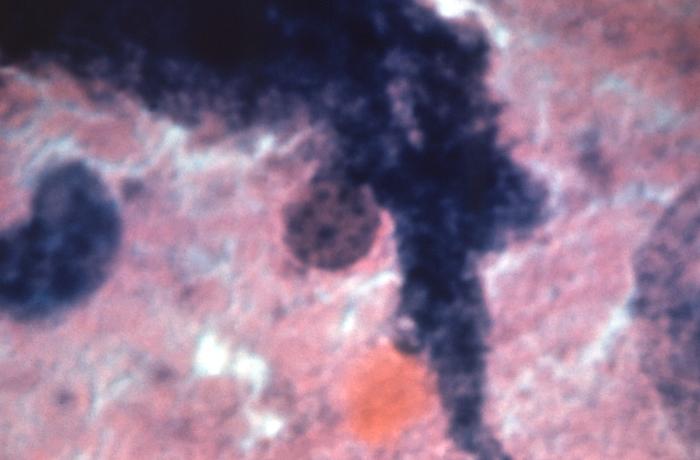
Multiple Sclerosis
Multiple sclerosis (demyelinating disease) has a pathognomonic sign known as Lhermitte’s Sign, which is a sharp electric sensation running from the head to the feet, triggered by neck flexion. It’s a particularly uncomfortable sensation characteristic of this disease, though it can occasionally be found in similar conditions.
Enfermedad de Lyme
Lyme disease (infection by Borrelia bacteria) is caused by a tick bite. A very defined and characteristic pathognomonic sign is the appearance of an erythema migrans around the bite site. This erythema consists of concentric red circles on the infected skin, and its progression is used to determine the disease’s advancement and stage.
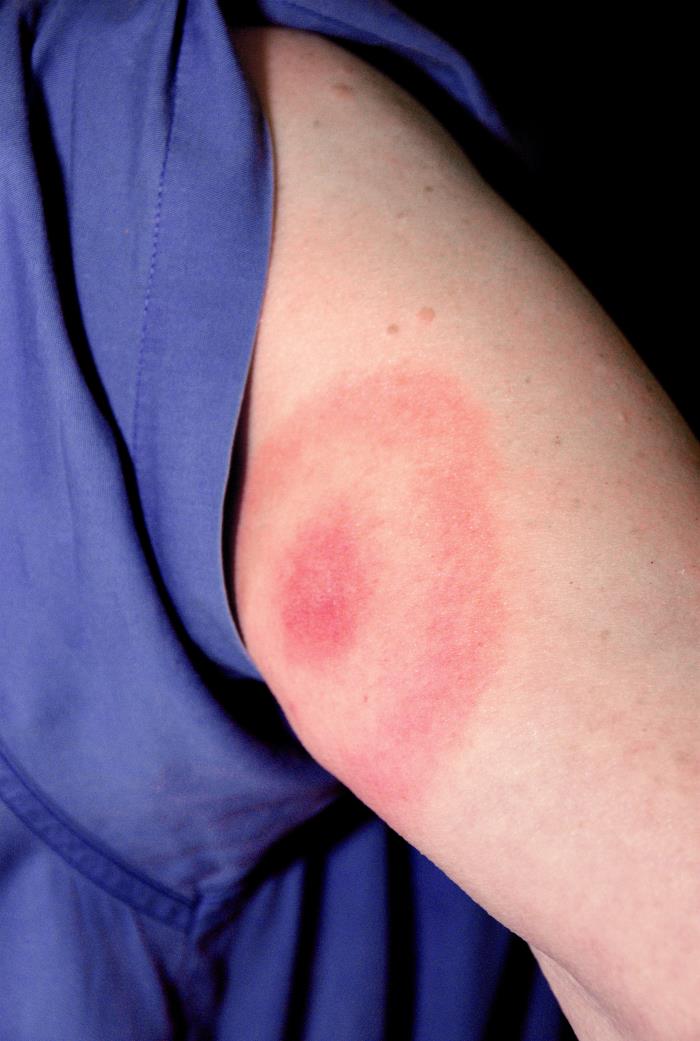
Measles
Measles (infection by the Morbillivirus) predominantly affects children. It has a pathognomonic sign that precedes the disease known as Koplik’s spots. These spots are small and appear on the inner cheek mucosa a few days before the characteristic measles rash breaks out.
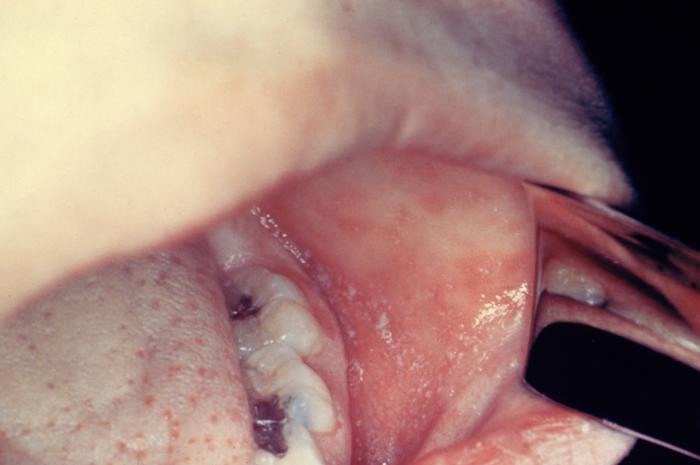
Wilson’s Disease
Wilson’s disease (an autosomal recessive inherited disorder) is characterized by an increased amount of copper in tissues and urine. It’s a severe condition that requires lifelong treatment and a strict diet, mainly consisting of rice and chicken. Its pathognomonic sign is a brown ring around the cornea of the eye known as the Kayser-Fleischer ring, which results from copper accumulation in a layer of the cornea.
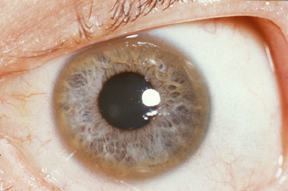
Tetanus
Tetanus (infection by the Clostridium tetani bacteria) is a severe disease with high mortality rates. It has no cure, and treatment is symptomatic relief. While controlled in developed countries through vaccination, but it still has high incidence in developing countries where vaccines are inaccessible or vaccination schedules aren’t completed. Its peculiar pathognomonic sign is the sardonic smile, resulting from involuntary facial muscle spasms, creating a smiling appearance and eyebrow elevation.
Corticospinal Lesion
In the event of a corticospinal lesion, the Babinski sign can be an indicator. In adults and children post-early childhood, the expected response to this stimulus is the big toe flexing downward with the other toes also flexing. If the big toe extends upward and other toes fan out (positive Babinski response), it may indicate central nervous system injury or disease, particularly involving the corticospinal pathways.
Yellow Fever and Typhoid Fever
Yellow fever (YFV virus infection) and typhoid fever (Salmonella Typhi bacterial infection) are diseases with distinct natures but share a common pathognomonic sign: Faget’s sign. This sign is characterized by simultaneous high fevers and bradycardia (low heart rate). Faget’s sign is also termed pulse-temperature dissociation, where one curve rises as the other falls.
Appendicitis
Appendicitis (inflammation of the appendix) is a common ailment requiring urgent hospital care. Its pathognomonic sign is McBurney’s point, characterized by intense pain at that specific spot. This point lies 1/3 of the distance from the right antero-superior iliac spine to the navel. This spot is crucial since the surgical incision for appendix removal is also made there.

Cholecystitis (gallbladder)
Cholecystitis is the inflammation of the gallbladder. It often requires surgery to remove the gallbladder, as it typically becomes inflamed due to the accumulation of stones (gallstones). Its pathognomonic sign is Murphy’s sign, which is defined as pain accompanied by apnea (a pause in breathing) experienced by the patient when the inflamed gallbladder is palpated.
Pemphigus
Pemphigus, an autoimmune disease, is a distressing condition caused by antibodies produced by the human body attacking its own skin and mucous membranes. Its primary characteristic, and also its pathognomonic sign, is the Nikolsky’s sign, wherein the epidermis of the skin and mucous membranes slough off with minimal contact, leaving the underlying layers exposed and highly inflamed.
Meningitis
Meningitis, an infection of the brain and spinal cord, is a severe condition. It can be caused by multiple factors, such as viruses, bacteria, fungi, parasites, allergies, cancer, or chemical agents. Bacterial meningitis is the most serious of all types. Across all variants, there are two pathognomonic signs indicating the presence of this disease: Brudzinski’s sign, characterized by the involuntary flexion of the hips and knees when the patient’s neck is flexed, and Kernig’s sign, wherein the patient has difficulty fully extending the leg when the hip is flexed at 90 degrees.
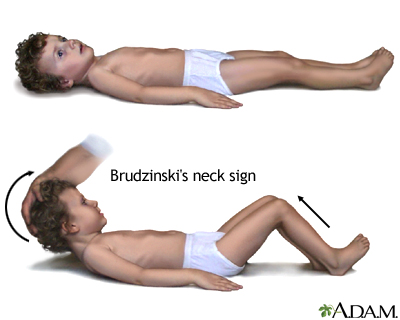
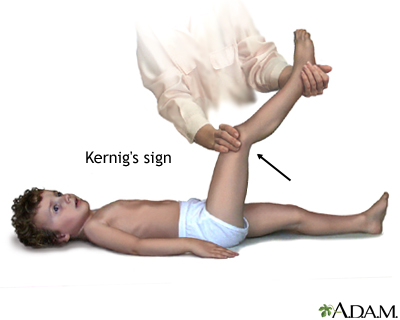
Hypocalcemia
Hypocalcemia, a deficiency of calcium in the blood, is an electrolyte disorder that basically involves a lack of necessary calcium in the bloodstream. It’s usually caused by issues in the production of parathyroid hormone (PTH). There are two clear pathognomonic signs: Trousseau’s sign (a carpopedal spasm induced by inflating a blood pressure cuff on the arm) and Chvostek’s sign (contraction of the facial muscle upon tapping the facial nerve).
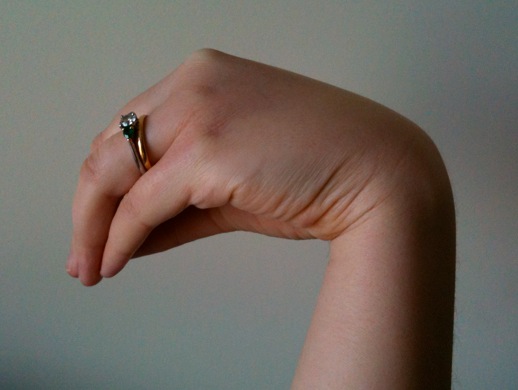
Summary table for the pathognomonic signs
|
Sign or Symptom |
Related condition |
Type of condition |
|
Aerophobia / Hydrophobia |
Rabies |
Viral infection |
|
Negri bodies |
Rabies |
Viral infection |
|
Lhermitte's sign |
Multiple Sclerosis |
Demyelinating Disease |
|
Erythema migrans |
Lyme disease |
Bacterial infection from tick bite
|
|
Koplik's spots |
Measles |
Viral infection |
|
Kayser-Fleischer ring |
Wilson disease |
Autosomal recessive disorder |
|
Sardonic smile |
Tetanus |
Bacterial infection |
|
Babinsky's sign |
Corticospinal lesion |
Neuronal Injury
|
|
Faget's sign |
Yellow fever |
Viral infection |
|
Faget's sign |
Typhoid fever |
Bacterial infection |
|
McBurney's sign |
Appendicitis |
Inflammatory Condition |
|
Murphy's sign |
Cholecystitis (gallbladder) |
Inflammatory Condition |
|
Nikolsky's sign |
Pemphigus |
Autoimmune Disease |
|
Brudzinski's sign |
Meningitis |
Infection from multiple causes |
|
Kernig's sign |
Meningitis |
Infection from multiple causes |
|
Trousseau's sign |
Hypocalcemia |
Electrolyte Disorder |
|
Chvostek's sign |
Hypocalcemia |
Electrolyte Disorder |
Do you know any other pathognomonic signs? Leave it in the comments 🙂
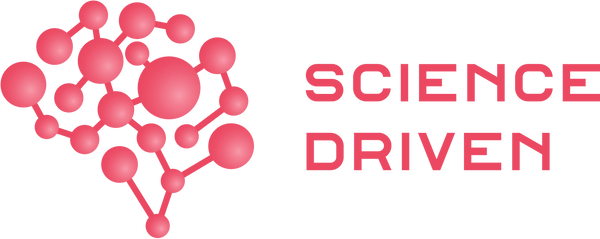

1 comment
El artículo me ha parecido muy interesante y ameno.